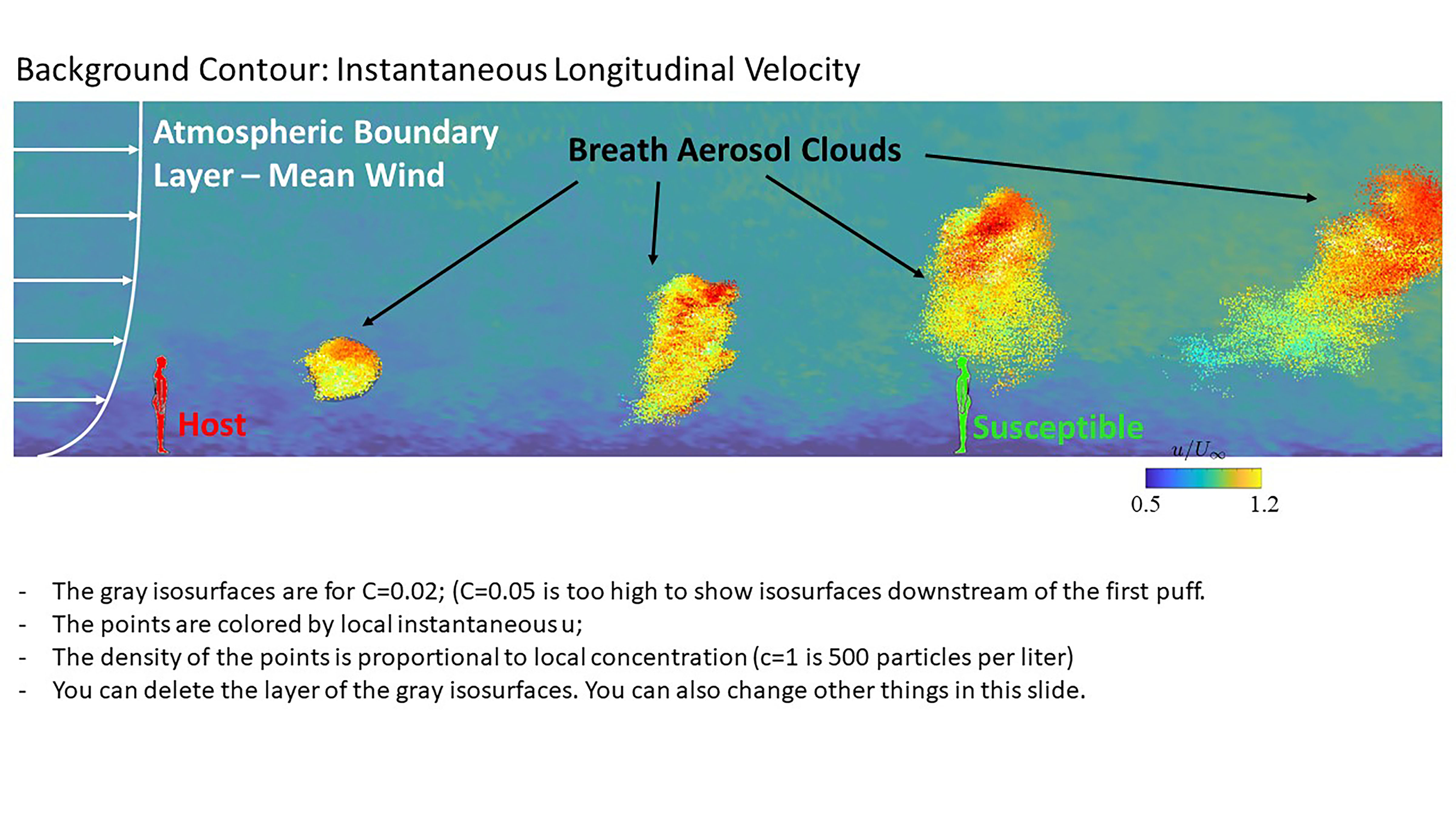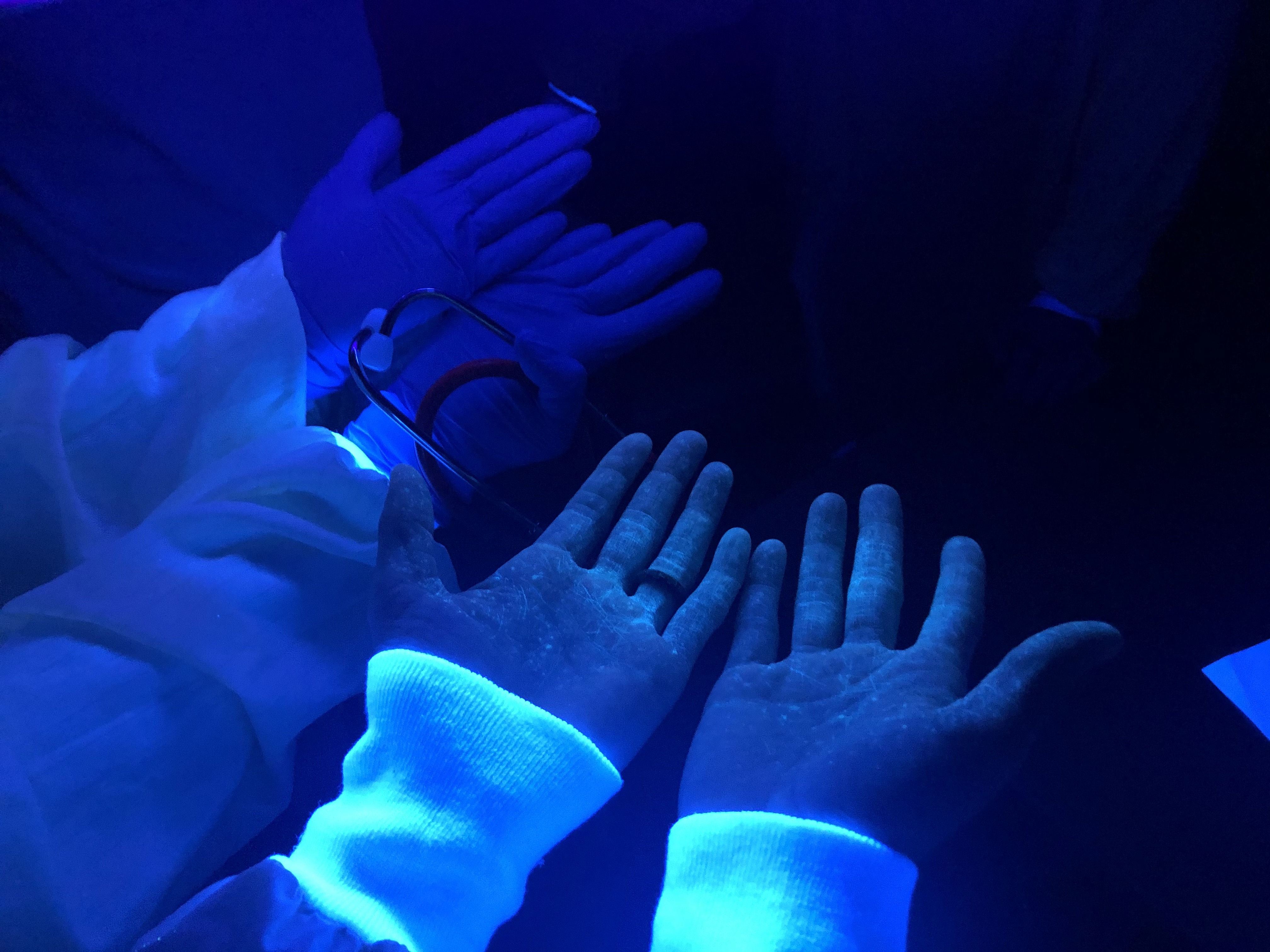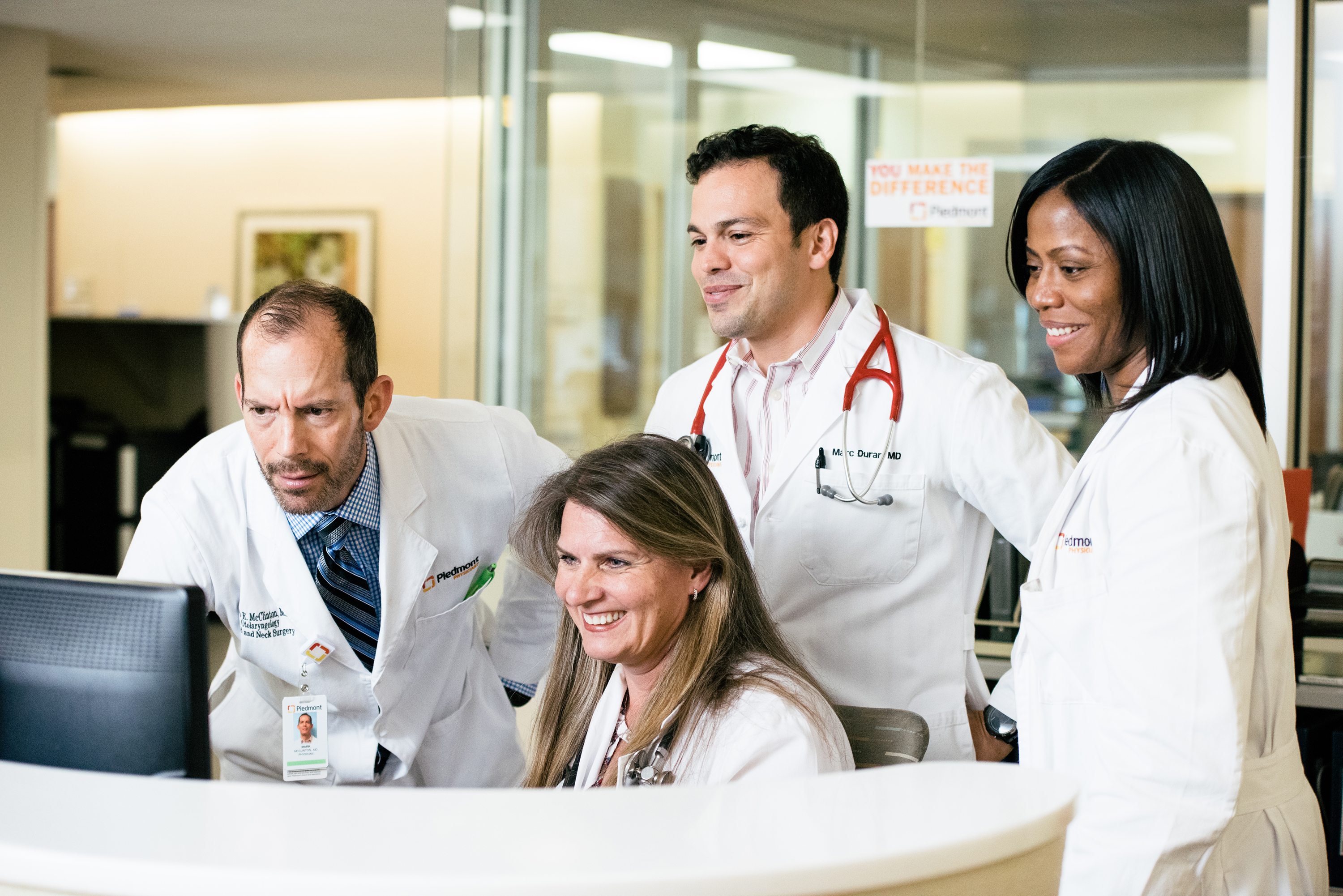An innovative protocol called PepSeq is changing the way researchers test for contagious diseases—and this knowledge should change the way humanity responds to future pandemics. NAU researcher Jason Ladner and a team of collaborators from TGen published a comprehensive study about PepSeq that lays out the process, the tool and how to interpret the results.
Tag: Contagion

Estimating Risk of Airborne COVID-19 with Mask Usage, Social Distancing
In Physics of Fluids, researchers used a model to understand airborne transmission that is designed to be accessible to a wide range of people, including nonscientists. Employing concepts of fluid dynamics and factors in airborne transmission, they propose the Contagion Airborne Transmission inequality model. While not all factors may be known, it can still be used to assess relative risks. The researchers determined protection from transmission increases with physical distancing in an approximately linear proportion.

Interactions Within Larger Social Groups Can Cause Tipping Points in Contagion Flow
Contagion processes, such as opinion formation or disease spread, can reach a tipping point, where the contagion either rapidly spreads or dies out. When modeling these processes, it is difficult to capture this complex transition. In the journal Chaos, researchers studied the parameters of these transitions by including three-person group interactions in a contagion model called the susceptible-infected-susceptible model. In this model, an infected person who recovers from an infection can be reinfected.

Ultraviolet Light Exposes Contagion Spread from Improper PPE Use
Despite PPE use, reports show that many health care workers contracted COVID-19. A novel training technique reinforces the importance of using proper procedures to put on and take off PPE when caring for patients during the pandemic. Researchers vividly demonstrate how aerosol-generating procedures can lead to exposure of the contagion with improper PPE use. The most common error made by the health care workers was contaminating the face or forearms during PPE removal.

Digital Tool Helps Hospital Make Important Coronavirus Retest Decisions
The dearth of coronavirus tests and the many false negatives confront doctors with a difficult decision this new tool helps them make.